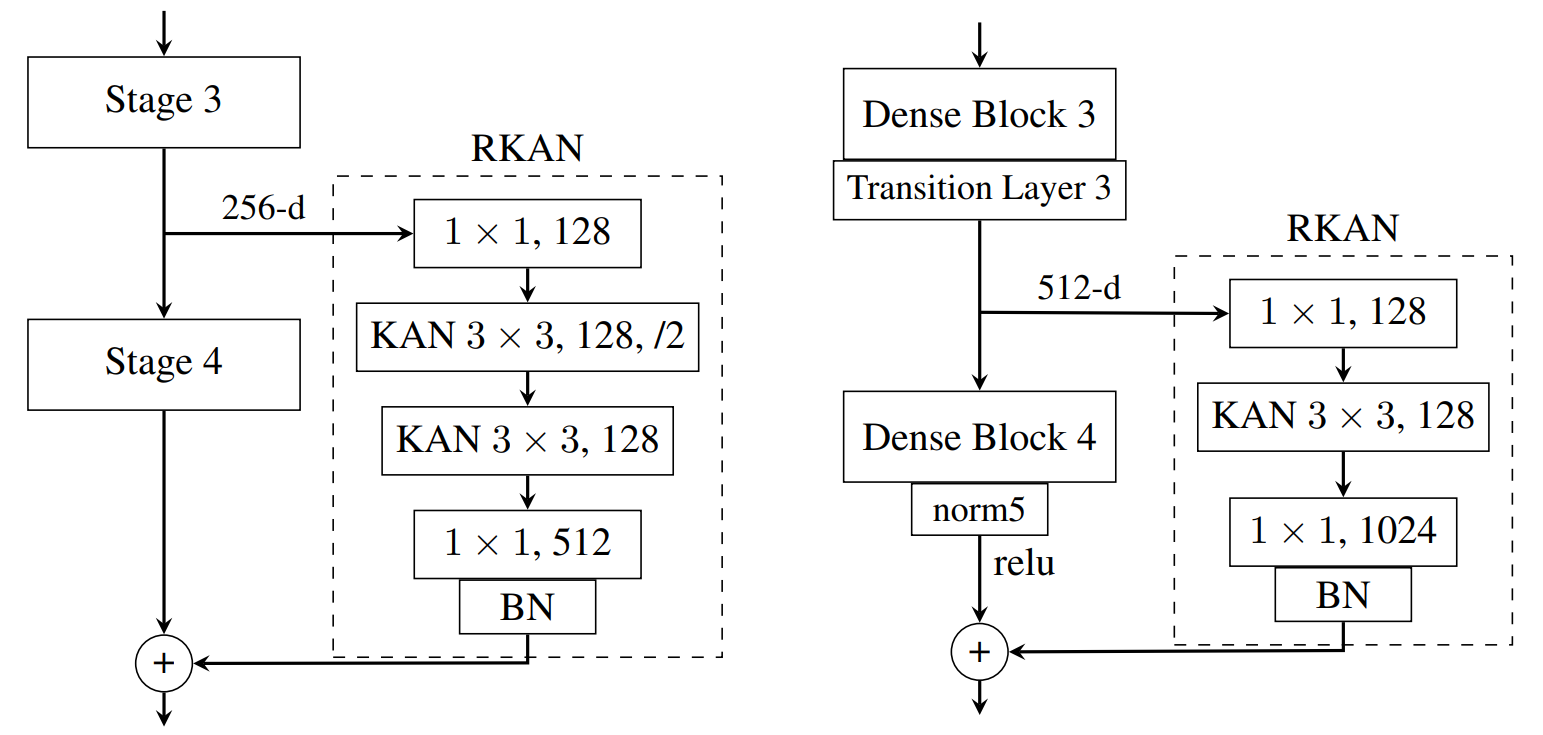RKAN is designed to enhance the representational capacity and learning efficiency of classic CNNs by integrating the RKAN block around the stages of existing architectures as a residual component, so we can use it as a complementary module rather than a complete replacement of standard convolutions. RKAN has shown notable and consistent improvements in CIFAR-100, Tiny ImageNet, STL-10, Food-101, SVHN, and ImageNet across different architectures, including ResNet, ResNeXt, Wide ResNet, DenseNet, RegNet, VGG, ConvNeXt.
You can also find our paper on arXiv.
@article{yu2024rkan,
title={Residual Kolmogorov-Arnold Network for Enhanced Deep Learning},
author={Yu, Ray Congrui and Wu, Sherry and Gui, Jiang},
journal={arXiv preprint arXiv:2410.05500},
year={2024}
}Networks are trained from scratch for 200 epochs using stochastic gradient descent (SGD) with a weight decay of 0.001. AutoAugment and CutMix with a 50% proability are used as data augmentation. RKAN blocks are added with four configurations: (s,1) at all four stages: 1, 2, 3, and 4; (s,2) at stages 2, 3, and 4; (s,3) at stages 3 and 4; (s,4) at stage 4 only. Currently, we have tried different reduce factors in (s,4) where the RKAN block is only added to stage 4 of the base architecture. Results below all use a reduce factor of 1 and are implemented with the best configuration as denoted by the number in brackets. We are currently training on the full ImageNet dataset using a much more refined training strategy and will be posting more results soon.
| RKAN Model | Top-1 Accuracy | Base Model | Top-1 Accuracy |
|---|---|---|---|
| RKAN-DenseNet-121 (s,4) | 83.09 | DenseNet-121 | 82.36 |
| RKAN-RegNetY-800MF (s,3) | 81.36 | RegNetY-800MF | 80.19 |
| RKAN-ResNet-34 (s,3) | 80.52 | ResNet-34 | 79.29 |
| RKAN Model | Top-1 Accuracy | Base Model | Top-1 Accuracy |
|---|---|---|---|
| RKAN-DenseNet-121 (s,4) | 65.42 | DenseNet-121 | 64.31 |
| RKAN-RegNetY-800MF (s,2) | 63.98 | RegNetY-800MF | 60.11 |
| RKAN-ResNet-34 (s,3) | 62.10 | ResNet-34 | 59.23 |



